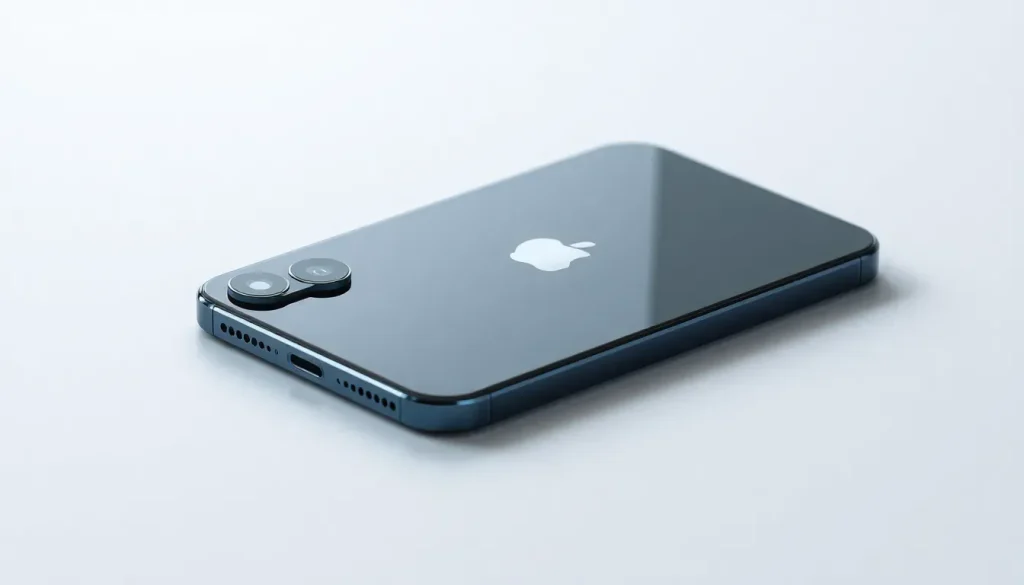iPhone 17 Pro's key upgrade that might go unnoticed

When it comes to the latest iPhone models, consumers often hone in on features such as battery life, camera capabilities, and sleek designs. However, there exists a feature that may easily slip under the radar yet holds significant potential for the future: the vapor chamber cooling system in the iPhone 17 Pro. Understanding its implications can alter the way we perceive the device's long-term performance and reliability.
The significance of the vapor chamber in the iPhone 17 Pro
This year, I found myself weighing the differences between the iPhone 17 Pro and the iPhone Air, ultimately choosing the latter. While I’m satisfied with my choice, I can't help but reflect on the advantages I may be missing, particularly the innovative vapor chamber feature in the Pro model.
Although the vapor chamber might not be the centerpiece of marketing campaigns, its importance cannot be overstated. This technology makes the iPhone 17 Pro more resilient and adaptable for future applications, particularly those driven by artificial intelligence.
Apple describes the vapor chamber as an advanced internal architecture designed to enhance the device's heat dissipation capabilities. This system utilizes deionized water sealed within the chamber, which is meticulously integrated into the aluminum chassis. The result is an effective means of managing heat generated by the powerful A19 Pro chip, allowing it to sustain high performance levels without overheating.
The vapor chamber facilitates a more balanced distribution of heat across the forged aluminum unibody, ensuring that the device not only performs well but remains comfortable to hold even during intensive usage.
This technology essentially permits the iPhone 17 Pro to deliver enhanced performance consistently, even under heavy processing loads. As the demand for powerful applications continues to rise, the vapor chamber positions the iPhone 17 Pro as a more future-proof device compared to its predecessors.
The role of artificial intelligence in shaping future iPhone workloads
The burgeoning influence of artificial intelligence on our devices is undeniable. AI is not merely an enhancement; it is becoming integral to everyday functionality. The introduction of iOS 26, often dubbed the "Liquid Glass" update, is a testament to this shift, as it incorporates over 20 new features built around Apple Intelligence.
Two key trends have emerged from Apple's approach to AI:
- There is a clear emphasis on running AI processes locally on the device.
- AI is being leveraged to streamline and enhance everyday tasks.
With local processing becoming a priority, the need for robust computational power has never been greater. AI tasks can exert substantial pressure on hardware components, demanding efficient thermal management to prevent reduced performance.
Moreover, features that may not overtly appear as AI-driven, such as enhanced search functionalities or smart poll suggestions, are increasingly reliant on AI technology. This growing dependence on AI not only enhances the user experience but may also lead to higher power consumption.
Given these developments, the iPhone 17 Pro, equipped with its advanced vapor chamber, is exceptionally well-suited to handle the increasing demands of AI applications. My previous experiences with the iPhone 15 Pro and 16 Pro showed that they often overheated and slowed down during intensive AI tasks. In contrast, the iPhone Air has performed admirably, but as the reliance on AI features grows, it may soon struggle to keep pace.
For example, significant upgrades to Siri are anticipated soon, promising to revolutionize user interaction. As these features roll out, I expect my reliance on Apple Intelligence to increase, further emphasizing the importance of having a device like the iPhone 17 Pro that can handle such demands seamlessly.
Anticipating the future: Will the vapor chamber prove critical?
It’s reasonable to speculate that within the next couple of years, iPhones featuring the vapor chamber technology will demonstrate marked performance advantages over earlier models. As Apple continues to integrate AI into its ecosystem, the gap in performance between the iPhone 17 Pro and models without this feature could widen significantly.
This potential shift is worth noting, particularly for those considering their next smartphone purchase. The iPhone 17 Pro is not just a phone; it is a powerful tool designed to adapt to the changing landscape of technology.
In light of these developments, I find myself reconsidering the value of the vapor chamber in the context of future iPhone models. What once seemed like a secondary feature may soon emerge as a cornerstone of performance, particularly as we transition into an era dominated by AI applications.
Essential accessories for the iPhone 17 Pro
- AirPods Pro 3 - Enhance your audio experience with these advanced earbuds.
- MagSafe Car Mount for iPhone - Keep your iPhone secure and accessible while driving.
- HomeKit smart plug 4-pack - Automate your home with these smart plugs.
- 10-year AirTag battery case 2-pack - Keep track of your belongings with long-lasting battery life.
- 100W USB-C fast charging power adapter - Charge your devices quickly and efficiently.
As we look ahead, it's clear that the iPhone 17 Pro's vapor chamber cooling system is more than just a minor upgrade. It represents a strategic move towards a future where devices must grapple with increasingly demanding workloads, particularly in the realm of AI. The significance of this feature will likely become more apparent as the technology landscape continues to evolve.




Leave a Reply